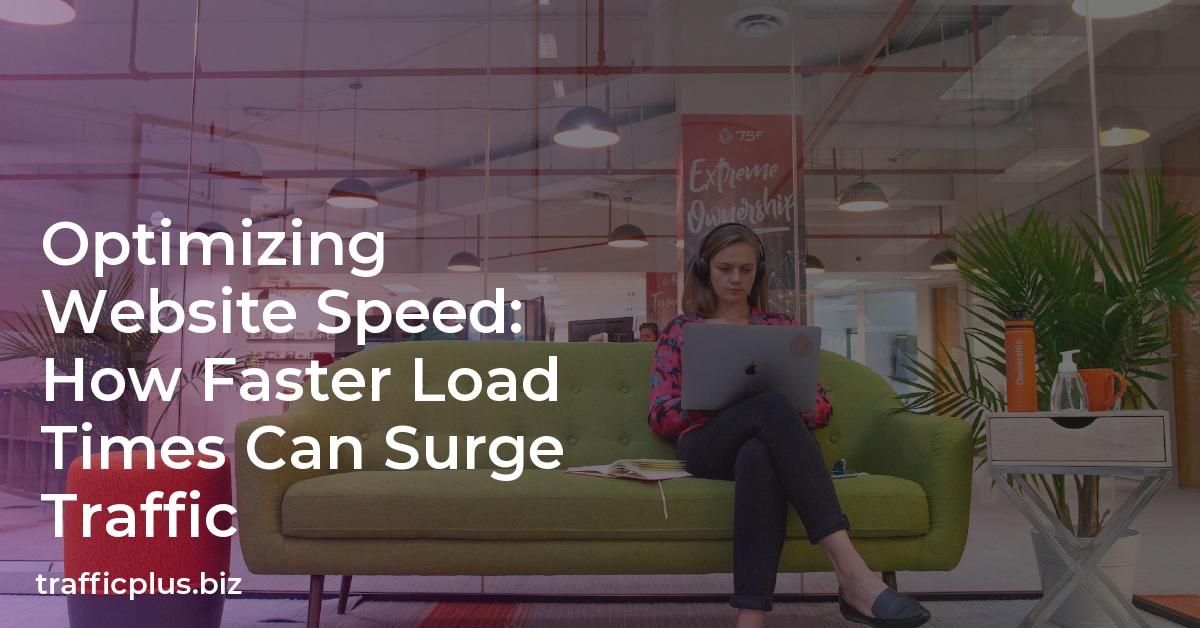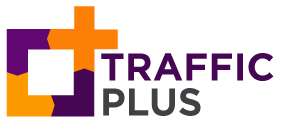
In today’s digital landscape, optimizing your website’s speed is crucial for driving more traffic and ensuring a seamless user experience. Faster load times can significantly impact your website’s success, attracting more visitors and increasing the likelihood of converting them into loyal customers.
Slow page load times can have a detrimental effect on user satisfaction and engagement. When a website takes too long to load, visitors are more likely to bounce, leaving your site before even exploring its content. Additionally, slow-loading pages can lead to lower average time on page, meaning that visitors spend less time interacting with your website. By optimizing your website’s speed, you can reduce bounce rates and increase the average time users spend on your pages, ultimately enhancing user satisfaction.
It’s important to note that website speed is not only crucial for user experience but also for search engine rankings. Search engines, particularly Google, consider website speed as a ranking factor. Slow-loading websites are less likely to be indexed and may appear lower in search results, reducing visibility and organic traffic. To maintain a strong online presence, it is essential to prioritize website speed optimization.
Several factors can contribute to a slow-loading website. Unoptimized images, javascript issues, excessive ads, bad hosting, and excessive HTTP requests can all hinder the performance of your website. It is vital to address these factors and take steps to optimize your website’s speed.
Fortunately, there are proven strategies for optimizing website page speed. Enabling compression, optimizing images, optimizing the delivery of Javascript and CSS, reducing redirects, using a Content Distribution Network (CDN), and implementing caching techniques can all significantly improve your website’s speed. Additionally, advanced techniques such as minifying code, upgrading to the HTTP/3 protocol, and optimizing database queries can further enhance performance.
The benefits of optimizing website speed are undeniable. A faster-loading website ensures a seamless user experience, increasing the chances of retaining visitors and converting them into customers. Moreover, improved website speed can drive business growth by attracting more organic traffic, increasing conversions, and ultimately boosting revenue.
In conclusion, website speed optimization is a critical aspect of running a successful online presence. By prioritizing faster load times, you can surge traffic, enhance user experience, and achieve long-term business growth.
The Impact of Slow Page Load Times
Slow page load times can have a significant impact on your website’s performance, leading to higher bounce rates and less time spent by users on your pages. When a website takes too long to load, visitors are more likely to leave before even seeing the content. This increases bounce rates, which is the percentage of visitors who navigate away after viewing only one page. A high bounce rate indicates that users are not finding what they need or are getting frustrated with the slow loading times.
In addition to higher bounce rates, slow page load times also result in less time being spent by users on your pages. When a website is slow to load, users may lose patience and leave before exploring further. This reduces the average time on page, which is the average duration of a user’s visit. It is essential to capture users’ attention and keep them engaged, and fast page load times play a crucial role in achieving this.
The Impact of Slow Page Load Times on User Satisfaction
Optimizing website speed is not only about bounce rates and average time on page. It is also about enhancing user satisfaction. When users have to wait for a website to load, their experience becomes frustrating, leading to a negative perception of your brand. A slow-loading website can leave a lasting impression on users, causing them to avoid returning in the future and potentially sharing their negative experience with others.
In conclusion, slow page load times have a detrimental effect on your website’s performance. It increases bounce rates, reduces average time on page, and negatively impacts user satisfaction. To ensure a positive user experience and keep visitors engaged, it is crucial to optimize your website’s speed and improve page load times.
| Effects of Slow Page Load Times | Impact |
|---|---|
| Higher bounce rates | Visitors leaving without exploring further |
| Less time spent on pages | Reduced average time on page |
| Decreased user satisfaction | Negative brand perception and potential loss of future visits |
Website Speed as a Search Engine Ranking Factor
Did you know that website speed plays a crucial role in determining your search engine rankings? It’s true! Search engines like Google prioritize fast-loading websites because they prioritize user experience. If your website takes too long to load, it can result in decreased indexing and lower search rankings.
When your website loads slowly, it negatively impacts user satisfaction. Visitors are more likely to bounce off your site, spending less time on average. High bounce rates and low average time on page can signal to search engines that your website doesn’t provide a seamless user experience, leading to lower rankings in search results.
Several factors can contribute to a slow-loading website. Unoptimized images, javascript issues, excessive ads, bad hosting, and excessive HTTP requests can all slow down your website’s performance. To improve website speed, it’s essential to optimize different aspects of your site, such as enabling compression, optimizing images, and improving the delivery of Javascript and CSS. Redirects should be reduced, and implementing a Content Distribution Network (CDN) and caching techniques can also help enhance website speed.
| Factors Contributing to Slow-Loading Websites |
|---|
| Unoptimized images |
| Javascript issues |
| Excessive ads |
| Bad hosting |
| Excessive HTTP requests |
For advanced website performance optimization, you can consider minifying code, upgrading to the HTTP/3 protocol, and optimizing database queries. These techniques can further enhance your website’s speed, ensuring a smooth browsing experience for your visitors.
Optimizing your website speed is not just about improving search engine rankings; it also delivers a seamless user experience, increasing conversions, and driving business growth. When your website loads quickly, visitors are more likely to stay, engage with your content, and convert into customers or leads. So, take the necessary steps to optimize your website’s speed and reap the benefits it brings!
Factors Contributing to Slow-Loading Websites
Several factors can contribute to a slow-loading website, making it essential to identify and address these issues. One common culprit is unoptimized images, which can significantly impact page load times. Images that are not properly compressed or resized can result in larger file sizes, leading to slower loading speeds. By optimizing images, we can reduce their file size without compromising their visual quality, resulting in faster loading times for our website.
Javascript issues can also contribute to slow-loading websites. Poorly optimized or excessive use of Javascript can cause delays in rendering and executing scripts, which in turn slows down the overall loading time. It is crucial to review and optimize the Javascript code used on our website to minimize any potential performance bottlenecks.
Excessive ads can also be a factor affecting website speed. While ads are important for monetization, an excessive number of ads can increase the number of HTTP requests required to load the page, leading to slower loading times. Careful optimization and strategic placement of ads can help strike a balance between revenue generation and website performance.
| Factors | Effects |
|---|---|
| Unoptimized Images | Increased file size and longer loading times |
| Javascript Issues | Delays in rendering and executing scripts |
| Excessive Ads | Increased number of HTTP requests and slower loading |
In addition, the choice of hosting provider can significantly impact website speed. Opting for a hosting provider with inadequate resources or a slow network infrastructure can result in slower loading times. Evaluating and selecting a reliable hosting provider that offers fast server response times is crucial for optimizing website performance.
Lastly, excessive HTTP requests can also contribute to slow-loading websites. Each individual HTTP request made by the browser to load website resources adds a small delay to the overall loading time. Minimizing the number of HTTP requests by combining files, using CSS sprites, or implementing lazy loading techniques can help reduce the load time and improve website speed.
Summary:
- Unoptimized images can increase file sizes and slow down website loading times.
- Javascript issues, such as poor optimization or excessive use, can cause delays in rendering and executing scripts.
- Excessive ads can lead to an increased number of HTTP requests and negatively impact website speed.
- Choosing a reliable hosting provider with fast server response times is crucial for optimizing website performance.
- Minimizing the number of HTTP requests by combining files or using lazy loading techniques can improve website speed.
Strategies for Optimizing Website Page Speed
Implementing the right strategies can significantly improve your website’s page speed, resulting in a smoother user experience. By following these techniques, you can enhance your website’s loading time and keep visitors engaged:
- Enable Compression: Compressing your website’s files can reduce their size, allowing them to load faster. Use tools like Gzip to enable compression and decrease page load times.
- Optimize Images: Large image files can slow down your website. Resize and compress images without compromising their quality. Tools like Photoshop and online image compressors can help you optimize your images.
- Optimize Delivery of Javascript and CSS: Minify and combine your JavaScript and CSS files to reduce the number of requests made to the server. This streamlines the loading process and improves speed.
- Reduce Redirects: Redirects add extra time to the loading process. Minimize the use of redirects or replace them with direct links to boost your website’s speed.
- Utilize Content Distribution Network (CDN): CDNs store your website’s files on multiple servers globally, which helps deliver content faster to users located far from your server’s physical location. Consider using CDNs like Cloudflare or Amazon CloudFront to enhance website speed.
- Implement Caching Techniques: Utilize browser caching and server-side caching to store frequently accessed files. This allows returning visitors to load pages faster by retrieving files from their local cache instead of the server.
By implementing these strategies, you can optimize your website’s page speed and provide a better experience for your users. But don’t stop here! Advanced techniques such as minifying code, upgrading to the HTTP/3 protocol, and optimizing database queries can further enhance your website’s performance.
Remember, improving website speed is not just about user experience; it also plays a vital role in search engine rankings. Search engines like Google consider page speed as a ranking factor, and slow-loading websites may suffer from decreased indexing and lower search rankings. So, invest time and effort into optimizing your website’s speed to enjoy the benefits of a seamless user experience, increased conversions, and overall business growth.
Advanced Techniques for Website Performance Optimization
Take your website performance to the next level with these advanced techniques tailored to optimize your website’s speed. By implementing these strategies, you can ensure faster load times, improved user experience, and increased conversions.
Minifying Code
One effective way to boost your website’s speed is by minifying your code. Minification involves removing unnecessary characters, such as spaces, comments, and line breaks, from your HTML, CSS, and JavaScript files. This reduces the file size and allows for quicker loading times. Utilize online tools or coding plugins to automatically minify your code, making it more efficient and improving overall website performance.
Upgrading to HTTP/3 Protocol
Another advanced technique to optimize website speed is by upgrading to the HTTP/3 protocol. This latest version of the HTTP protocol offers improved performance and faster data transfer. With features like multiplexing and QUIC (Quick UDP Internet Connections), HTTP/3 reduces latency and enhances website loading times. Contact your web hosting provider or consult with a developer to determine if your website is compatible with HTTP/3 and to implement this upgrade.
Optimizing Database Queries
Database queries play a crucial role in website performance. Optimizing these queries can significantly enhance load times and overall speed. Take time to review and optimize your database queries, ensuring they are efficient and well-structured. Consider techniques such as indexing, caching query results, and optimizing table structures to reduce query execution time. By fine-tuning your database queries, you can improve website speed and deliver a seamless user experience.
| Benefits of Advanced Techniques for Website Performance Optimization |
|---|
| Faster load times |
| Improved user experience |
| Increased conversions |
In conclusion, implementing advanced techniques for website performance optimization is essential in today’s competitive online landscape. Minifying code, upgrading to the HTTP/3 protocol, and optimizing database queries are effective strategies that can significantly improve your website’s speed. By reducing load times and enhancing user experience, you can ultimately achieve increased conversions and drive business growth. Stay ahead of the curve by staying up to date with the latest optimization techniques and continuously optimizing your website’s speed.
The Benefits of Optimizing Website Speed
By optimizing your website speed, you can unlock a host of benefits that contribute to a better user experience, higher conversions, and accelerated business growth. A seamless user experience is crucial for keeping visitors engaged and encouraging them to explore your website further. When your web pages load quickly, users are more likely to stay, reducing bounce rates and increasing the average time spent on your site.
In turn, this improved user satisfaction can lead to higher conversions. A fast-loading website provides a smooth and efficient browsing experience, making it easier for visitors to navigate, find what they need, and complete desired actions, such as making a purchase or filling out a contact form. With faster load times, you can capitalize on more opportunities to convert prospects into loyal customers.
Not only does website speed impact user experience and conversions, but it also plays a significant role in search engine rankings. Search engines like Google consider page speed as a ranking factor, and slower-loading websites may experience decreased indexing and lower search rankings. By optimizing your website speed, you enhance your chances of appearing higher in search results, attracting more organic traffic, and increasing your online visibility.
Ultimately, the benefits of optimizing website speed extend beyond user satisfaction and search rankings. Faster load times can catalyze business growth by creating a positive brand impression and driving customer loyalty. A website that loads quickly demonstrates professionalism, reliability, and a commitment to providing an exceptional user experience. As a result, satisfied visitors are more likely to return, engage with your content, recommend your site to others, and ultimately help drive your business to new heights.

Lauren Richmond is a leading digital marketing expert at Traffic Plus, a dynamic firm dedicated to revolutionizing online presence for businesses of all sizes. With a deep passion for online growth and an expert grasp of cutting-edge marketing strategies, Lauren excels in crafting tailored solutions that drive meaningful website traffic.

